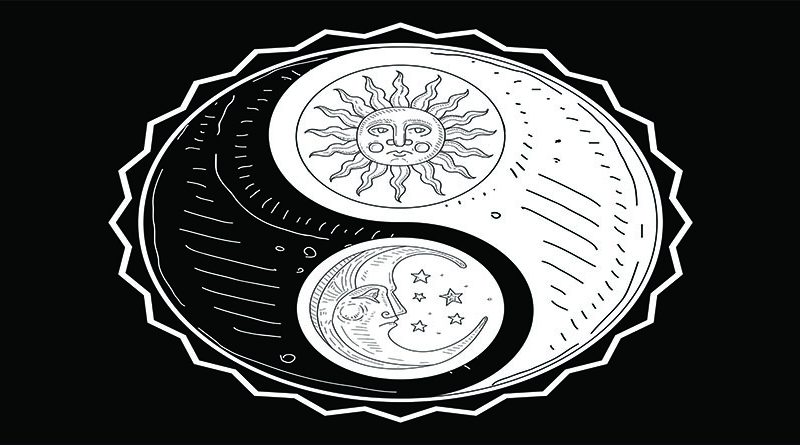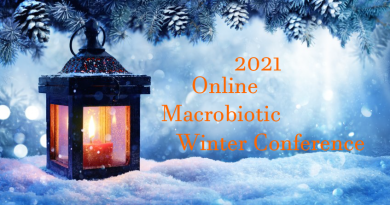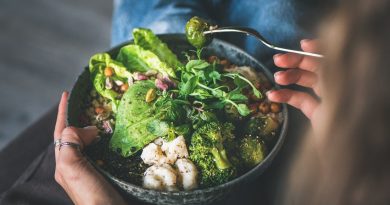Questioning the mRNA Vaccine
By Edward Esko
mRNA [messenger RNA] vaccines are a new type of vaccine to protect against infectious diseases. To trigger an immune response, many vaccines put a weakened or inactivated germ into our bodies. Not mRNA vaccines. Instead, they teach our cells how to make a protein—or even just a piece of a protein—that triggers an immune response inside our bodies. That immune response, which produces antibodies, is what protects us from getting infected if the real virus enters our bodies. —Centers for Disease Control (CDC)
At the level of the cell, existence is maintained by a delicate balance between DNA (yang) and RNA (yin.) DNA is the controller; it determines the configuration of the proteins that comprise our physical makeup. RNA is the messenger. It conveys the mandates from the DNA controller and enables cells to manufacture proteins according to the directives of the DNA. The process is finely calibrated to maintain the delicate balance that exists between these complementary energies. Ideally, the process operates to keep the organism healthy and free from disease. Specifically, the proteins manufactured in the cells are those that are actually needed by the body and thus do not trigger a response from the immune system.
These proteins are generated and regulated in response the body’s day-to-day needs. However, the protein produced as a result of the mRNA vaccine is not self-generated. It is artificially prompted. Moreover, the mRNA protein has nothing to do with the body’s daily requirements. It is entirely superfluous. What could go wrong with a novel foreign protein? Plenty. The mRNA vaccine raises a number of serious questions which remain unanswered, even as the vaccine launch gets underway.
Our first question is, “What unexpected effects could arise when cells are prompted to form an unnecessary foreign protein? According to the CDC:
COVID-19 mRNA vaccines give instructions for our cells to make a harmless piece of what is called the “spike protein.” The spike protein is found on the surface of the virus that causes COVID-19. COVID-19 mRNA vaccines are given in the upper arm muscle. Once the instructions (mRNA) are inside the muscle cells, the cells use them to make the protein piece. After the protein piece is made, the cell breaks down the instructions and gets rid of them.
Let us hope this is not wishful thinking. With limited testing and trial runs, the long-term effect of the vaccine is unknown. It is not certain that the body’s cells will break down the mRNA instructions and get rid of them. Certain cells may do this, but others may not. Each person who receives the vaccine is unique. One size does not fit all. It is impossible to standardize results and reactions. In some individuals, the cell may not be able to break down the mRNA instructions. Cells may thus continue producing foreign proteins, which may overwhelm the immune system and proliferate in an out-of-control fashion.
The fact that the Pfizer mRNA vaccine must be stored at minus 70 Celsius, colder than winter in Antarctica, is especially problematic. It is an indication that the vaccine is extremely yin or expansive. According to NPR.org:
Vaccines made from mRNA can be made much faster that older vaccines could, explains Margaret Liu, a vaccine researcher who chairs the board of the International Society for Vaccines and specializes in genetic vaccines. The problem, says Liu, is that mRNA is “really easily destroyed, and that’s because there are many, many enzymes that will just break apart.” Here’s an analogy: Think of the vaccine as a chocolate bar that melts easily. Just as there are ways to keep the chocolate from melting into goo, there are things the drugmakers did to protect their COVID-19 vaccines.
Injecting the body with such extremely yin genetic material is highly risky. What’s to prevent highly explosive mRNA from hijacking the cell’s system for protein synthesis and spiraling out of control, or from initiating processes that lead to disintegration of the cell itself. CDC states with certainty that mRNA vaccines “do not affect or interact with our DNA in any way,” and that “mRNA never enters the nucleus of the cell, which is where our genetic material is kept,” and further that “the cell breaks down and gets rid of the mRNA soon after it is finished using the instructions.” However, because mRNA is extremely yin, there must be strong attraction between it and the strongly yang nucleus housing the cell’s DNA. Some portion of the mRNA may survive in the cell, enter the cell’s nucleus, and hijack the DNA, causing unwanted proteins to form.
The second question has to do with the body’s immune response itself. Again, according to CDC:
Next, the cell displays the protein piece on its surface. Our immune systems recognize that the protein doesn’t belong there and begin building an immune response and making antibodies, like what happens in natural infection against COVID-19.
Deliberately provoking the body’s immune response seems like a highly questionable strategy. Early on, it was recognized that the small number of COVID fatalities resulted, not from the virus itself, but from the body’s immune response. WebMD describes this phenomenon, “In many of the sickest patients, their blood is teeming with high levels of immune system proteins called cytokines. Scientists say these cytokines are evidence of an immune response called a cytokine storm, where the body starts to attack its own cells and tissues rather than just fighting off the virus.”
It is important to remember that the majority of Americans consume a diet based on animal protein, including foods like meat, eggs, and dairy. These proteins are often not completely broken down, and enter the bloodstream, not as fully digested amino acids, but as recognizable protein fragments. The immune system’s job is to recognize and neutralize foreign proteins, and these diet-derived proteins are no exception. The result is an over-stimulated immune response that leads to constant inflammation and to full-blown autoimmune disease. The mRNA virus prompts cells to produce additional foreign proteins. These proteins may lead to a tipping point, in which the immune system goes into overdrive, leading to cytokine storm and life-threatening systemic inflammation. Those eating a high animal food diet are especially at risk. The side effects to the vaccine experienced by persons with allergies, which result largely from consumption of milk and dairy products, offer proof of this relationship.
When it comes to the mRNA vaccine, caution is the best policy. Critical thinking and independent judgment, or as George Ohsawa recommended, “non-credo,” are essential. It is important to understand that the current paradigm, in which vaccines are deemed essential to public health, misses a critical point. The modern healthcare system needs to devote itself to a more fundamental goal; that is seeking practical and accessible methods for strengthening each person’s innate natural immunity, and as a result, making vaccination unnecessary. Moreover, since COVID-19 mortality is linked to the pre-existing health of the individual, it makes far more sense for modern medicine to endeavor to keep people healthy through the proven methods of diet, lifestyle, and activity. When it comes to vaccines, and to health in general, prevention is preferable to cure.





